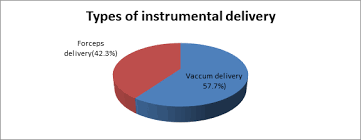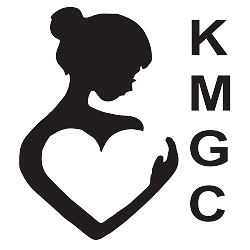Instrumental Deliveries
Instrumental delivery, also known as assisted vaginal delivery, involves the use of medical
instruments to help deliver a baby. This method is used when certain complications arise during
labor that necessitate assistance to ensure the safe delivery of the baby and the health of the
mother.
Types of Instrumental Deliveries
The two main types of instruments used in assisted deliveries are forceps and vacuum extractors:
Forceps Delivery: Forceps are tong-like instruments that cradle the baby’s head and
help guide it out of the birth canal during contractions. The forceps are gently positioned around
the baby’s head and used to pull the baby out as the mother pushes.
Vacuum Extraction: A vacuum extractor uses a soft or rigid cup attached to a
suction device. The cup is placed on the baby’s head, and the vacuum creates suction to help guide
the baby out of the birth canal as the mother pushes.
Indications for Instrumental Delivery
Instrumental delivery may be necessary for several reasons, including:
Prolonged Labor: When labor is not progressing, and the baby is not moving down the
birth canal despite the mother's efforts.
Fetal Distress: If there are signs that the baby is not getting enough oxygen or
experiencing other distress, a quick delivery may be necessary.
Maternal Exhaustion: When the mother is too tired to continue pushing effectively.
Abnormal Positioning: If the baby is in an awkward position that complicates
delivery, such as facing upwards (occiput posterior position).
Medical Conditions: Certain maternal medical conditions, such as heart disease,
which might make prolonged pushing unsafe.
The Procedure
Here is an overview of how instrumental deliveries are performed:
Preparation: The mother may be given anesthesia, such as an epidural or local
anesthetic, to manage pain. The bladder may be emptied using a catheter.
Positioning: The mother is positioned appropriately, usually lying on her back with
legs supported.
Application of Instruments: The chosen instrument (forceps or vacuum) is carefully
positioned on the baby’s head.
Assisted Delivery: During contractions, the healthcare provider uses the instrument
to help guide the baby out, coordinating with the mother's pushing efforts.
Completion: Once the baby’s head is delivered, the rest of the body usually follows
without additional assistance.
Risks and Complications
While instrumental deliveries are generally safe, there are some potential risks and complications:
For the Baby: Minor injuries such as bruising or marks on the face and head, more
serious injuries like skull fractures or bleeding within the skull (rare).
For the Mother: Vaginal or perineal tears, increased risk of postpartum hemorrhage,
and potential for urinary or fecal incontinence.
Recovery and Aftercare
Recovery from an instrumental delivery involves both physical and emotional care:
Pain Management: Pain relief medications may be prescribed to manage discomfort
from tears or episiotomy.
Perineal Care: Keeping the area clean and using ice packs can help reduce swelling
and pain.
Monitoring Baby: The baby will be closely monitored for any signs of injury or
distress.
Emotional Support: Emotional support from healthcare providers, family, and friends
is crucial for recovery.
Follow-Up Appointments: Regular check-ups to ensure proper healing and address any
concerns.

